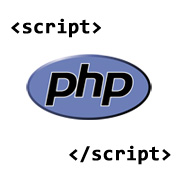
As I’ve outlined before, transitions can be triggered in a number of ways, and even via JavaScript. The reason for this is because the actual transition is not dependent on any particular event. Although it is the event that triggers the transition, the transition itself is completely separate from the event (as it should be).
Because of this, you’ll notice a slightly quirky behaviour if you place the transition on the part of your CSS that triggers the event.



 I got ambitious this past weekend and slapped together a new design for this site. Nothing too drastic, just a basic re-skinning with some layout tweaks.
I got ambitious this past weekend and slapped together a new design for this site. Nothing too drastic, just a basic re-skinning with some layout tweaks. You might remember about a year or so ago, there was some discussion about the potential privacy issues caused by the CSS
You might remember about a year or so ago, there was some discussion about the potential privacy issues caused by the CSS  Earlier this month, Chris Coyier posted an article discussing a way to deal with the empty elements that are often needed when doing CSS3 animation.
Earlier this month, Chris Coyier posted an article discussing a way to deal with the empty elements that are often needed when doing CSS3 animation. With any programming language, the learning journey is seemingly an endless one. Because I don’t have a computer sciences background, I feel I’ll always struggle to keep my JavaScript abilities up to par.
With any programming language, the learning journey is seemingly an endless one. Because I don’t have a computer sciences background, I feel I’ll always struggle to keep my JavaScript abilities up to par. If you’ve ever flown in an airplane and watched the pre-flight safety instruction video, you’ve probably noticed something about the instructions for putting on the oxygen masks.
If you’ve ever flown in an airplane and watched the pre-flight safety instruction video, you’ve probably noticed something about the instructions for putting on the oxygen masks. You’ve probably used CSS’s
You’ve probably used CSS’s  Currently, there are still a number of
Currently, there are still a number of  Okay, admittedly, this is a pretty crazy and virtually useless tip. But it’s just one of those things that illustrates the flexibility of our craft and how sometimes solutions to problems can be found from some really outside-the-box thinking.
Okay, admittedly, this is a pretty crazy and virtually useless tip. But it’s just one of those things that illustrates the flexibility of our craft and how sometimes solutions to problems can be found from some really outside-the-box thinking. Last week Paul Irish coined a new term:
Last week Paul Irish coined a new term: